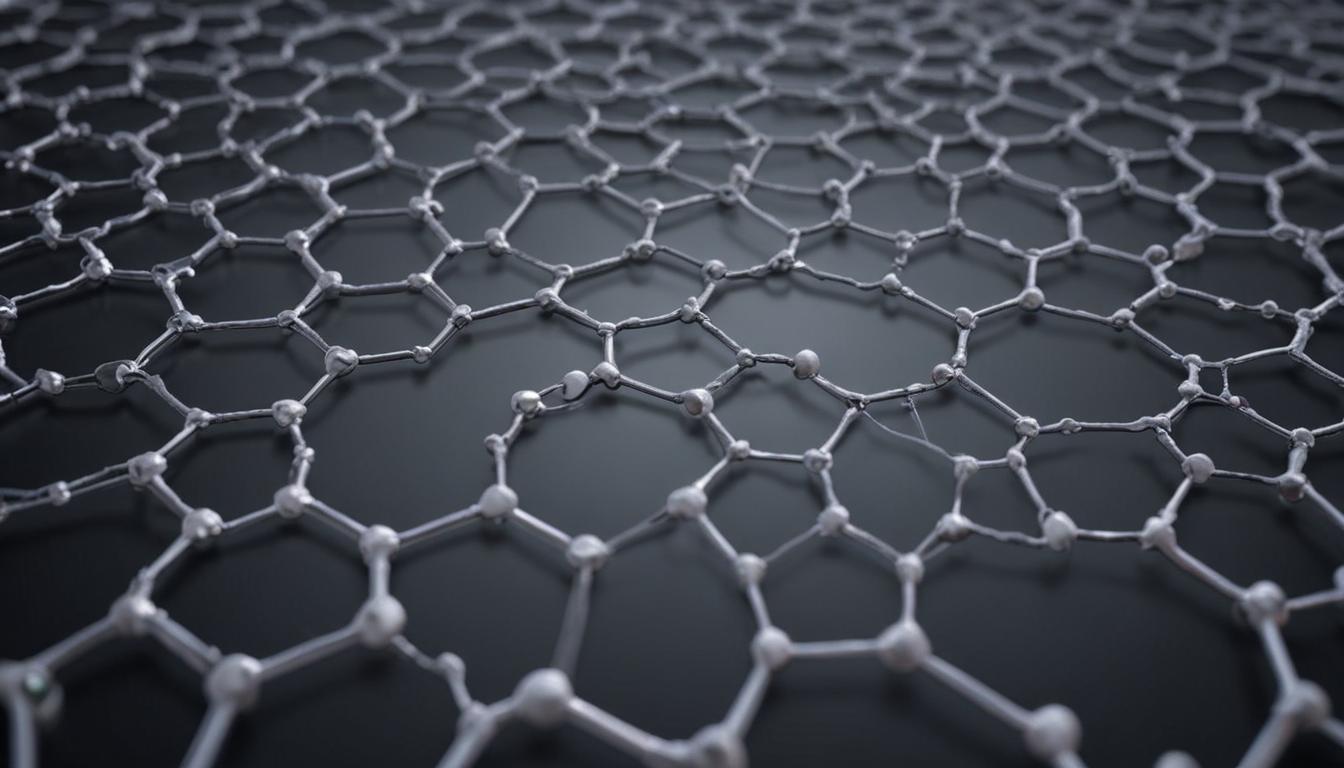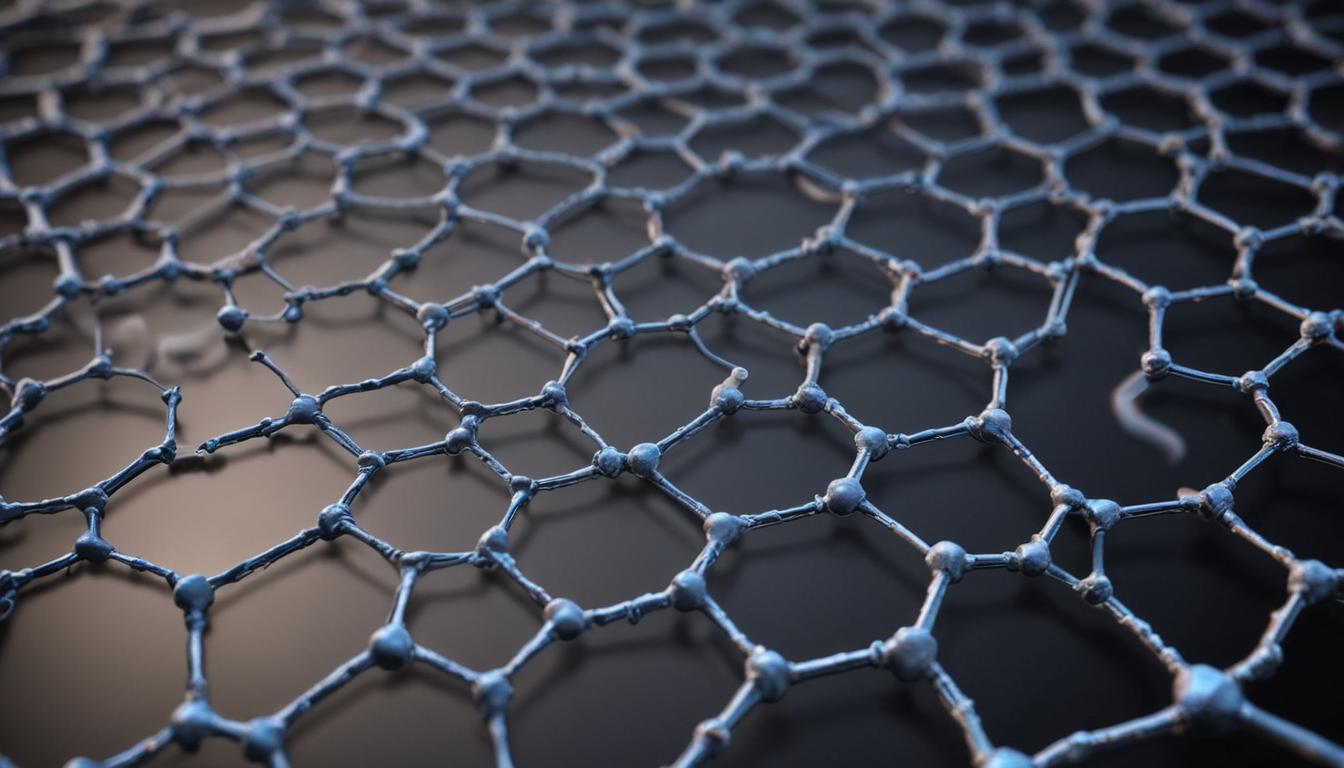Now Reading: Graphene Why It’s the Wonder Material
- 01
Graphene Why It’s the Wonder Material
Graphene Why It’s the Wonder Material

Graphene The Wonder Material
Have you ever felt like the incredible future promised by science fiction is always just around the corner, but never quite arrives? We hear about revolutionary technologies that could solve our biggest problems, from energy crises and climate change to chronic diseases, yet our daily lives seem to plod along with incremental improvements. What if there was a single, tangible material—not a concept, but a real substance—that held the key to unlocking that future? A material so revolutionary it could redefine electronics, medicine, energy, and transportation all at once.
That material exists, and it’s called graphene. It isn’t a far-off dream; it’s a Nobel Prize-winning discovery that scientists are actively working with today. This is the material poised to build the world of tomorrow. Forget what you think you know about the limits of technology. This guide will pull back the curtain on this true wonder material, explaining in simple terms what it is, what makes it so special, and how it is set to change absolutely everything.
What Exactly Is Graphene
At its core, graphene is astonishingly simple. Imagine the graphite in your pencil lead. That gray, soft material is made of countless layers of carbon atoms stacked on top of each other. Graphene is what you get when you isolate a single one of those layers. It is a two-dimensional sheet of carbon atoms arranged in a perfect hexagonal honeycomb pattern, and it is only one atom thick. This incredible thinness makes it the first true 2D material ever discovered by humankind, a substance so flat it has length and width but virtually no height.
The story of its discovery is as humble as its structure. For years, scientists theorized that a single layer of carbon would be too unstable to exist on its own. But in 2004, two researchers at the University of Manchester, Andre Geim and Konstantin Novoselov, proved them wrong. Using a refreshingly low-tech method, they used simple adhesive tape to peel away layers from a block of graphite until they were left with a flake that was just one atom thick. This breakthrough, achieved with an office supply, was so profound that it earned them the Nobel Prize in Physics in 2010 and kicked off a global scientific race to harness its power.

Why Is Graphene Called a Wonder Material
The term “wonder material” gets thrown around, but graphene has earned the title through its mind-boggling combination of properties. It doesn’t just excel in one area; it shatters records across multiple categories. It’s the unique blend of these characteristics in a single material that makes it so disruptive and full of potential. Scientists have found that it is the strongest, thinnest, and most conductive material ever tested.
This isn’t just a marginal improvement over existing materials. Its properties represent a quantum leap forward, enabling engineers and designers to do things that were previously impossible. From creating ultra-efficient solar cells to building impossibly light and strong vehicles, graphene provides a foundational building block for next-generation technology. Let’s explore the specific properties that make it so extraordinary.
Unbelievable Strength
Despite being the thinnest material imaginable, graphene is absurdly strong. It is more than 200 times stronger than steel by weight. To put that into perspective, a hypothetical sheet of graphene as thin as plastic kitchen wrap would be strong enough to support the weight of a full-grown elephant. This incredible strength-to-weight ratio opens the door for a revolution in structural engineering and manufacturing.
Imagine airplanes and cars built with graphene-composite materials. They would be significantly lighter, leading to massive gains in fuel efficiency and performance, while also being stronger and safer than current models. It could be used to create ultra-durable, lightweight body armor for soldiers and police officers, next-generation satellites that cost less to launch, and even earthquake-resistant buildings that can flex without breaking.
Superior Conductivity
Graphene is a superb conductor of both electricity and heat. It conducts electricity more efficiently than copper, which has long been the industry standard. Electrons move through its perfect hexagonal lattice with almost zero resistance, a phenomenon that has physicists incredibly excited. This property means it can be used to create electronics that are faster, smaller, and vastly more energy-efficient than the silicon-based technology we use today.
Furthermore, it is also the most thermally conductive material known to man. It can dissipate heat far more effectively than any other substance. This is a critical solution to one of modern electronics’ biggest problems overheating. By integrating graphene into computer chips, batteries, and LEDs, we could prevent devices from getting hot, allowing them to run faster for longer and dramatically extending their lifespan.
Ultimate Flexibility and Transparency
As if being the strongest and most conductive material wasn’t enough, graphene is also incredibly flexible, stretchable, and almost completely transparent, allowing about 98% of light to pass through. You can bend it, stretch it, and fold it without damaging its structure or compromising its amazing electronic properties. This combination is the holy grail for the future of display and wearable technology.
This opens up a world of possibilities for devices that seem like they’re straight out of a sci-fi movie. Think about transparent, flexible smartphones that you can roll up and put in your pocket, or television screens so thin and light you can hang them like wallpaper. It could be used to create “smart windows” that can generate solar power or function as a display, and biomedical sensors that can be worn directly on the skin to monitor vital signs in real-time without discomfort.
The Future Powered by Graphene
The applications for graphene stretch across nearly every industry. In energy, its massive surface area and conductivity make it ideal for creating supercapacitors and batteries that can charge in seconds instead of hours and hold significantly more power. For environmental applications, graphene oxide membranes have shown incredible promise for water filtration and desalination, with the potential to turn seawater into fresh drinking water efficiently and affordably. In the medical field, its sensitivity makes it perfect for creating advanced biosensors that can detect diseases at the molecular level, while its strength and biocompatibility make it a candidate for targeted drug delivery systems and advanced prosthetics.
While graphene is already being used in some consumer products like sports equipment and headphones, its widespread, revolutionary impact is still on the horizon. The primary hurdle is developing methods for producing large, high-quality sheets of graphene affordably and at an industrial scale. Researchers around the world are aggressively tackling this challenge, and with every new breakthrough, we get one step closer to the graphene revolution. The age of this wonder material is not a matter of if, but when, and it promises to build a stronger, faster, and more sustainable world.


































